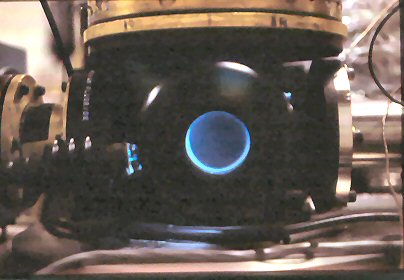|
New Sensor Concepts using High Tc Materials
- GAPs has innovative new approaches to sensor design using the present ceramic High Tc materials
Alkali Metal-Ammonia Cryogenic Solids – the first High Tc superconductor?
- A metastable solid exhibiting unusual optical behavior and having a controversial history of possibly being the first High Tc superconductor (up to ~190 ° K)
- While as a practical material it holds no promise, if it were a superconductor, its simplicity over the ceramic materials could provide clues to understanding the mechanism.
Brief History of Alkali Metal-Ammonia Cryogenic Solids
- Richard Ogg (Stanford University) published a paper in 1946 claiming that a solid sodium-ammonia solution may be a superconductor at temperatures as high as 190° K (the melting point of the solution) which created great interest in this metastable solid
- Because of the difficulty in successfully forming this cryogenic solid from the liquid state (phase separation problem), only one person somewhat confirmed Ogg’s discovery, but then withdrew it in light of all the overwhelming unsuccessful attempts by others (none of this work was definitive)
- E. Bosch (1954) studied vapor deposited thin films with no anomalous resistivity results (again not necessarily definitive)
- 1970’s saw a rebirth of interest into sodium-ammonia as a superconductor (Russian literature)
- Found anomalously low resistivity results
- Uncertainty about whether it is a superconductor
- Harvard University (late 1970’s) – work done on the optical properties of thick film samples grown by an innovative new vapor deposition approach (motivated by the material’s potential relationship to Io, one of the moons of Jupiter)
- Not able to study the electrical properties, but saw unusual optical properties

Looking into deposition chamber at a dilute sodium-ammonia sample |
- There is a need to definitively settle whether alkali metal-ammonia cryogenic solids are superconductors since the implications for understanding High Tc superconductivity could be enormous
|

